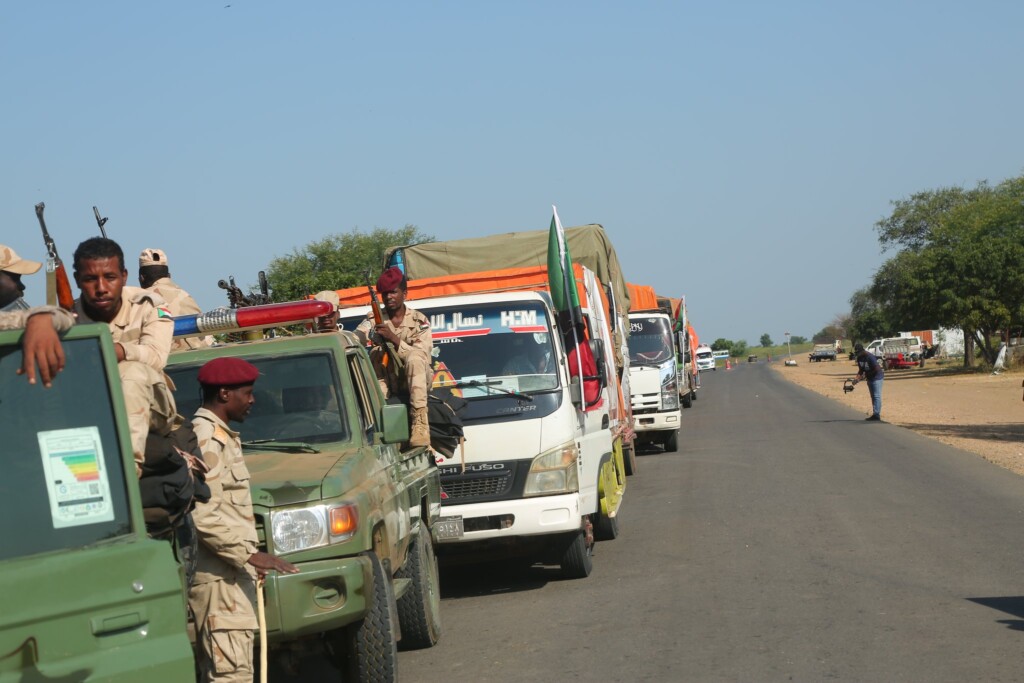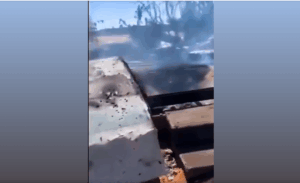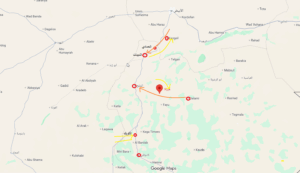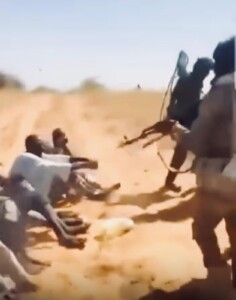Relative calm in Sudan’s Blue Nile region, but humanitarian situation deteriorates
There is currently a “relative though tense calm” in the Blue Nile region but, amidst the chaos and uncertainty, not all bodies have been buried yet. The humanitarian situation has also deteriorated as displaced are about to run out of food.
 Humanitarian aid convoy arrives in affected areas in the Blue Nile region, guided by the Rapid Support Forces (social media)
Humanitarian aid convoy arrives in affected areas in the Blue Nile region, guided by the Rapid Support Forces (social media)
There is currently a “relative though tense calm” in the Blue Nile region but, amidst the chaos and uncertainty, not all bodies have been buried yet. The humanitarian situation has also deteriorated as displaced are about to run out of food.
Mohamed Ibrahim, head of the Hausa* Group in the Blue Nile region told Radio Dabanga yesterday that there is currently “a relative though tense calm” in the areas that witnessed violence.
Because of the relative calm, the Council of Deans of Blue Nile University decided to resume studies in all faculties yesterday, starting on Thursday.
Nevertheless, chaos is also very present among the remaining people and those who fled their burning homes. Several bodies of those killed in the recent clashes in Wad El Mahi in the south-eastern part of the Blue Nile region have not yet been buried.
They have not been able to bury those killed in Medina 8 in Wad El Mahi, Ibrahim said. An unknown number of people are also still missing.

guided by the Rapid Support Forces (social media)
Humanitarian situation
The humanitarian situation for the displaced in Wad El Mahi is deteriorating, enhanced by the difficulty for humanitarian aid convoys to reach the area, Ibrahim explained. The displaced depend on whatever food is left of their farms in the area, but they are about to run out.
The number of displaced increased to 235,000 people in the Blue Nile region and neighbouring states since the outbreak of inter-communal clashes.
Ramadan Yasin, the Commissioner for Humanitarian Aid in the Blue Nile region, told Radio Dabanga that some of the displaced walked 80 kilometres on foot to find refuge. He also explained that some displaced people “got stuck” in residential areas in the Wad El Mahi, Bau, and El Tadamon governorates**.
He called on the government and donor countries to provide assistance to the displaced as soon as possible, especially food, shelter, and medicine.
Last Friday, Yasin said that the relative calm of the situation in the region allowed for the careful start of humanitarian interventions.
Inter-communal violence renewed in October in Wad El Mahi. The clashes originally started in mid-July south of El Roseires when indigenous El Funj, El Hamaj, and Berta tribesmen attacked Hausa families in the area. The violence flared up again in September, when at least 24 people were killed.
At least 200 people died so far.
* The Hausa in Sudan are part of the Hausa ethnic group, which is very influential in West Africa, politically and culturally. In the process of traveling and trading for centuries, a number of them migrated east to places like Sudan – where they are still seen by many as outsiders, as they cannot relate to an original Sudanese tribe.
** On August 8, Gen Ahmed El Omda, Governor of the Blue Nile Region (formerly Blue Nile state), issued a number of decrees, based on the October 2020 Juba Peace Agreement (JPA), by which the seven Blue Nile localities Ed Damazin, El Roseires, Wad El Mahi, Bau, Geisan, El Tadamon, and Kurmuk became ‘governorates’. International IDEA stated in an analysis last year that though the Blue Nile and [South and West] Kordofan protocol incorporated in the JPA grants autonomy to these areas, it does not specifically provide that they become a region.











 and then
and then